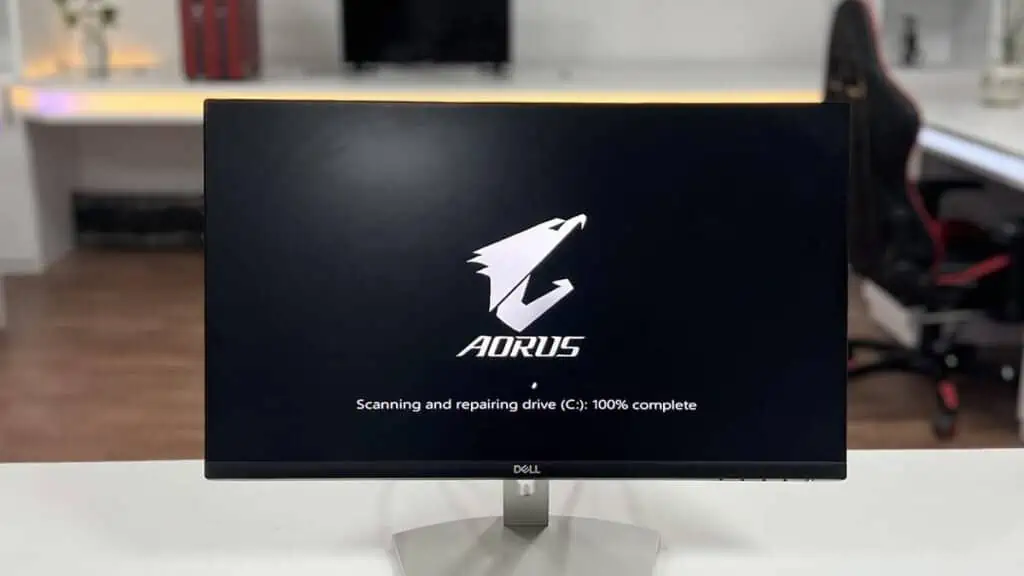After an improper shutdown or power failure, your computer automatically scans your drive for any issues and tries repairing them.
If it detects any corruption or you run a CHKDSK for the C drive, it will mark the drive for automatic scan.
Normally, you should not run into this screen on the next boot after your computer successfully completes the scan.
But if your system can’t reset the mark or flag for the automatic scan, it will happen on every boot. Manually reset this schedule to resolve the issue.
This issue can also occur if your disk is nearing its end. You may have to replace it in such cases.
Anyway, let’s move on to the possible solutions.
Run SMART Scan to Check Disk Health
Before moving on to other fixes, it’s better to check the health of your SSD or hard disk drive. If it is starting to fail, back up all necessary data and start using another disk altogether.
- Some Motherboard or laptop systems provide dedicated utilities to check disk health on their UEFI/BIOS. You can check official sources or forums to see if your system comes with such tools.
- Several SSD or Hard Drive manufacturers like Samsung, WD, etc., also provide OEM applications that perform S.M.A.R.T. check on the disks.
- If your disk manufacturer doesn’t provide such apps, you can use third-party software like CrystalDiskInfo, SSD Lite, Crystal Disk Mark, and so on for this purpose.
- These apps should be easy to download, run and navigate. If you encounter any issues, check their official websites and forums for any help.
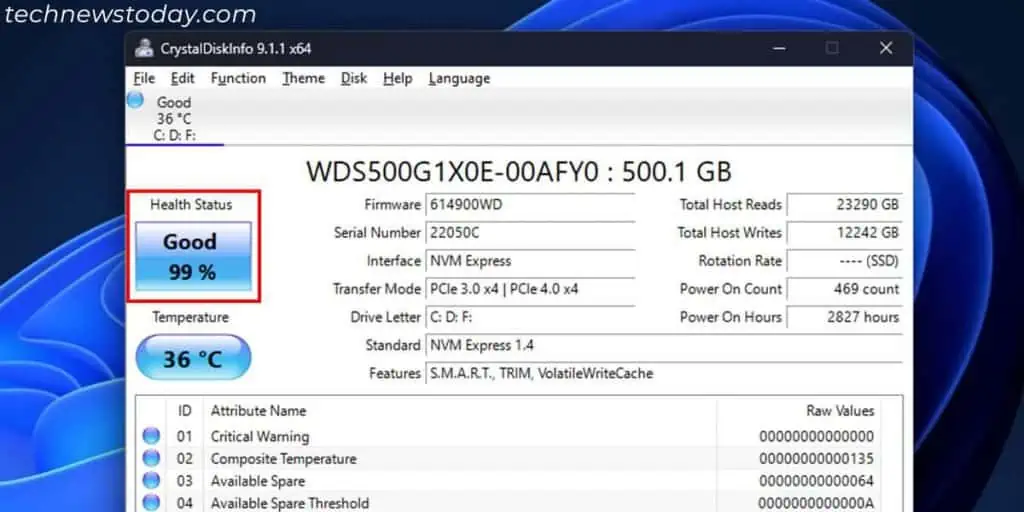
If there’s no significant issue with the disk, move on to the software fixes below. But if the drive is failing, replace it with another and install a new Windows OS there.
If you need additional help for the replacement, refer to our How to Install an SSD and How to Install a Hard Drive guides.
Disable Auto Scan and Repair Manually
If you repeatedly run into the Scanning and Repairing Drive screen even when your disk is fine, there might be two reasons:
- Your system didn’t detect any problem but couldn’t reset the scheduled scan.
- Your system could not repair all the corruption on the disk.
In such cases, reset the scheduled scan manually and run a deeper CHKDSK scan using the /r flag.
It will check all the physical drive sectors in addition to the file system and other logical information. Use the Admin-level Command Prompt for this purpose.
- Open Run by pressing Windows + R.
- Type
cmdand press Ctrl + Shift + Enter to open the Elevated Command Prompt. - Type
chkntfs C:and press Enter. - If it says “Chkdsk has been scheduled manually to run on next reboot,” type
chkntfs /x C:and press Enter to cancel the scan. - After that, type
chkdsk /r C:and press Enter. Confirm it withY. - Restart your computer.
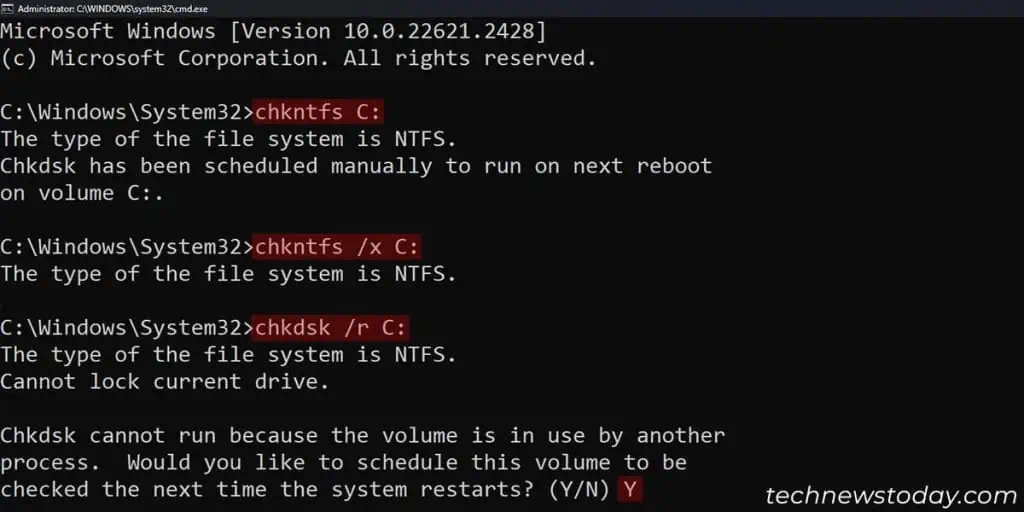
Then, restart your PC again and see if you still run into this issue. If so, you may have to run CHKDSK on the Advanced Startup. For that,
- Click on the power button icon on the login screen or Start menu. Click on Restart while holding the Shift key to get to Advanced Startup screen.
- Go to Troubleshoot > Advanced Options > Command Prompt.

- This environment may reassign your drive letters. Type the following commands and press Enter after each to determine the reassigned letter for your system drive:
diskpartlist volume(Look for your system drive by comparing the size)exitdir D:(replaceD:with the letter for the drive you suspect. This command will list the files and folders inside this drive to help you confirm whether it is your system drive or not.
- Then, type
CHKDSK /r D:and press Enter. Make sure to replaceD:with your system drive letter. - Close Command Prompt and get to the Windows system. Then restart your computer and see if you still encounter the same issue.
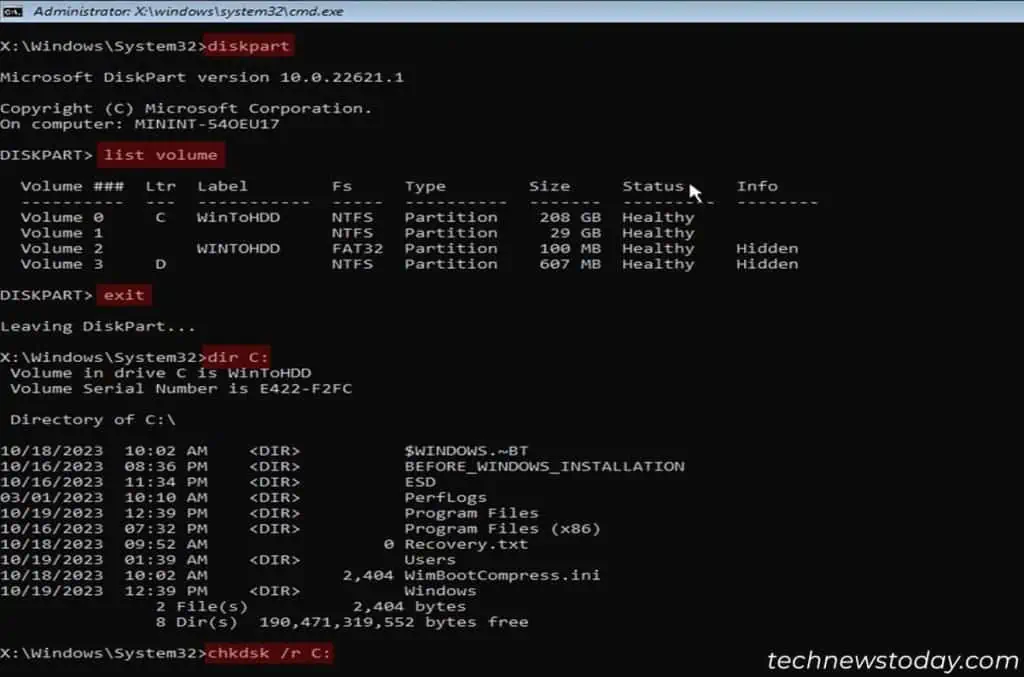
Run SFC and DISM
Manually running CHKDSK may not resolve this issue if some necessary system files are corrupt. In such cases, run DISM and SFC before CHKDSK.
System File Checker (SFC) repairs system file corruption using the component store. Similarly, Deployment Image Servicing and Management (DISM) repairs this component store, which SFC needs, using Windows update (on the internet).
So run DISM before SFC. The complete process is as follows:
- Open the Elevated Command Prompt.
- Type the following commands and press Enter after each:
DISM /Online /Cleanup-Image /RestoreHealthSFC /Scannow
- Then, perform the above method again and see if it helps.
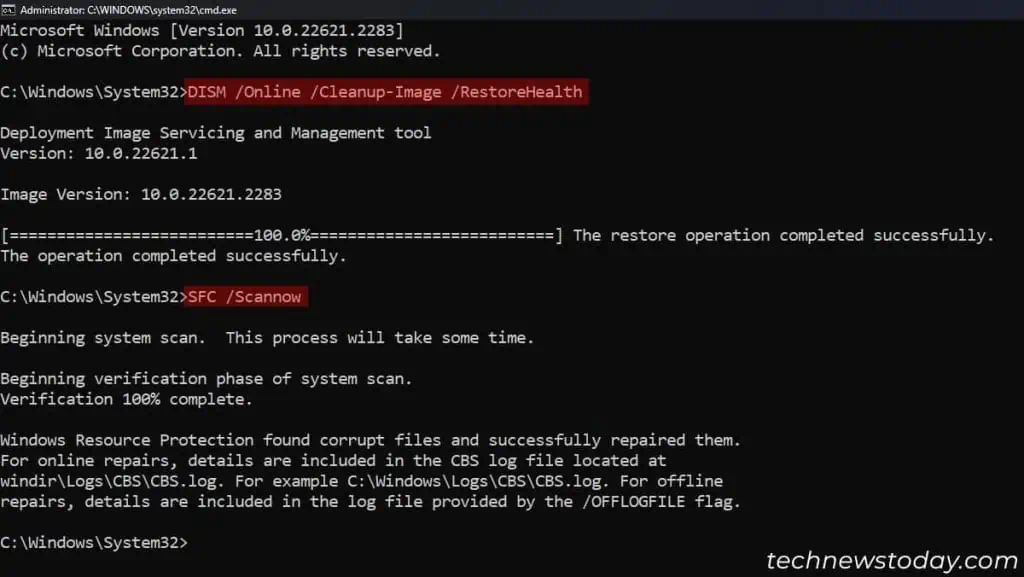
Perform System Restore
You can also restore your system back to the point where you hadn’t experienced this issue if you have a suitable restore point. It will take care of all system issues you have encountered since then, including the above.
Some processes like Windows update may also create restore points automatically, so check for those as well.
To use System Restore and revert to that point,
- Open Run.
- Type
rstruiand press Enter to open System Restore utility. - Select the appropriate restore point and follow the given instructions.

How to Fix Windows Stuck on Scanning and Repairing Drive?
In such cases, first force restart Windows to get out of the Scanning and Repairing Drive screen. If you keep encountering the same issue, get to Advanced Startup through a bootable Windows USB drive and apply the following solutions:
- Run CHKDSK from Advanced Startup’s Command Prompt.
- Run Startup Repair. If it says Startup Repair couldn’t repair your PC, you need to repair or recreate the EFI partition.
- Remove the drive from your computer and check its health in another. Use the same method as above.
- Clean Install Windows.
